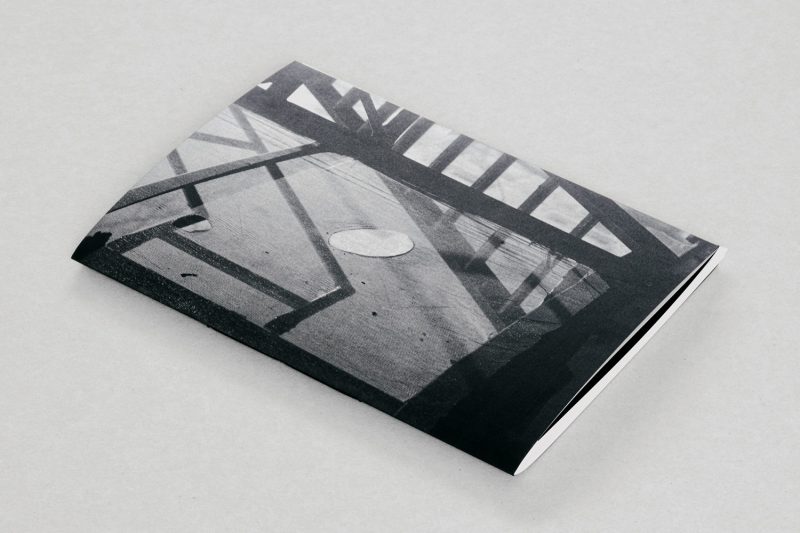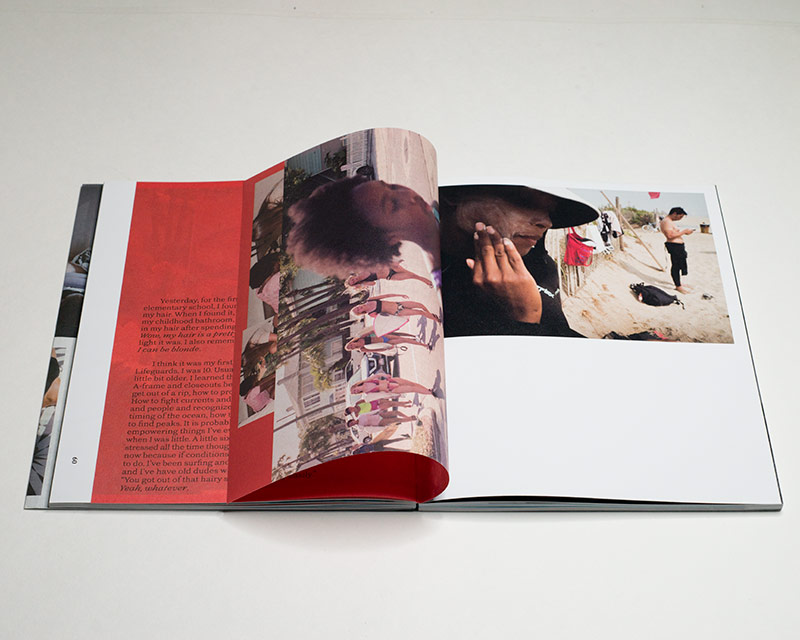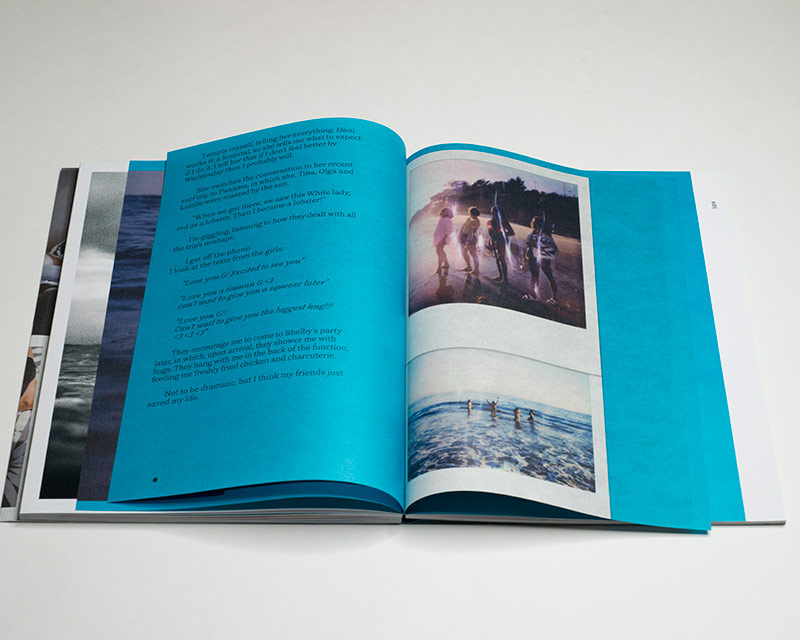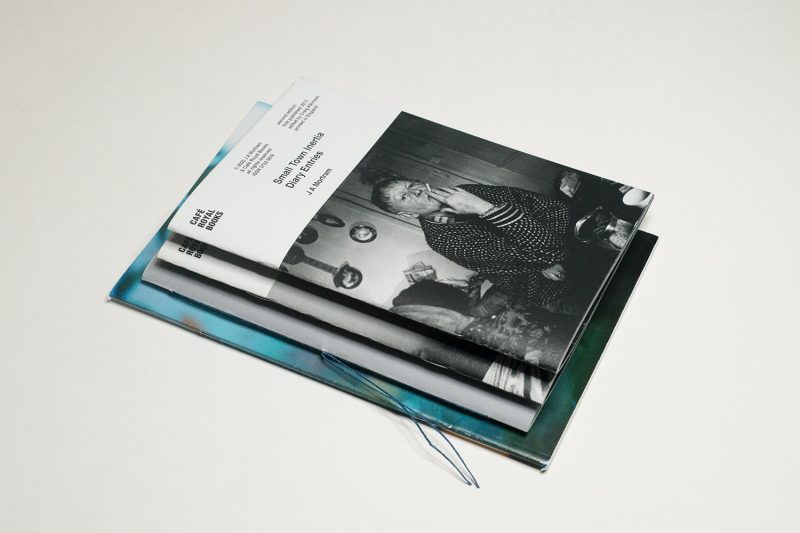For almost two decades, I’ve been looking into German photographers engaging with their native country’s fraught history and its repercussions for the present. This interest led me to dive into the topic photographically myself (the work is ongoing, Vaterland is merely the first installment). But I also noticed how there has been an increase in the number of photographers producing work around Germany. The following is the first in what I envision to be a series of conversations with some of these artists. I intend to dive more deeply into what it means to be a German citizen and photographer who has to navigate the mine field that is German history.
Jonas Feige recently published This Soil We Have Created For Ourselves with Kominek Books. It takes its title from a line in the play Wilhelm Tell by Friedrich Schiller. A little earlier, he published a book about an aspect of Germany’s colonial history entitled Zenker with Edition Patrick Frey. Unlike This Soil, Zenker was a collaboration with his partner Yana Wernicke. Jonas and I had had a number of in-person conversations during my most recent trips to Germany, in which we discussed what we were dealing with photographically. For this conversation, I spoke with Jonas over Zoom at the end of August this year. The conversation has been edited for length and clarity, and it was translated from its original German.
Jonas Feige
I was born in 1988, one year before the fall of the Wall. I didn’t experience it myself. I am actually a child of the united Germany.
Jörg Colberg
I have the feeling that people who grew up in the unified Germany approach the German history differently than East or West Germans who are of my generation or older.
JF
I think the fact that so many people are looking into the topic has to do with the return of the right-wing soup all across Europe but also in Germany. It’s simply a reaction to the fact that these things are coming back. It’s also a bit of a shock, because people grew up with the feeling that it wouldn’t be an issue any longer.
Another critical aspect is that this legacy is always passed on from generation to generation. In principle, we — that is, my generation, but even more so those who are coming next — are the first people who no longer have a direct connection at all [to the Nazi era]. My grandfather still fought in the war. The next generation has nobody to talk to who experienced the whole thing. At some stage, I read something about this in a book by Aleida Assmann. She spoke with the chairman of the Auschwitz memorial. He said that the moment will come when someone will be in charge of the memorial who has never spoken to a survivor himself. That’s totally crazy.
I think that’s where this different perspective is coming from. I experienced neither the GDR nor the immediate post-war period. I only know about it in an abstract and mediated fashion. My grandfather hardly ever talked about it. Somehow, we had to find a way to deal with it, because it won’t go away. And we now see that the topic has not disappeared.

JC
I hadn’t thought of it that way. I only have the West German perspective. My grandfathers also fought in the war. But they both died before I was born. In my family, the topic of National Socialism was never brought up. Was it the same for you?
JF
In principle yes. I never met my maternal grandfather, either. He died early when my mother was 12 years old. And the other one had fought on the Eastern Front. But he never really talked about it. I only know stories from my father. But there are only very few.
My grandfather was an infantry soldier, responsible for connecting the front with the units further back by cable. That’s why he always carried a large cable drum on his back. They were a small unit. They went back and forth between the front and units further back and laid cables. There is a story where a shell exploded next to him. The cable drum saved his life because it caught all the shrapnel.
But otherwise he never talked about it. I can only remember sitting in front of the news one evening. Something about the Nazi past and maybe Hitler was shown. At those occasions, my grandfather would always get really angry and start ranting. “Those bastards, they lied to us.” All I know is that he was a simple infantry soldier. That’s all you could get out of him.
My grandmother lived in a very small village. They didn’t experience the war all that much. But there was another interesting situation when we all were sitting around the table. I was 10 or 12 years old, and I had just heard about Hitler for the first time. Somehow, that had become a topic at the dinner table. Suddenly, as if in a trance, my grandmother began to recite a text. “The Führer was born…” You could tell that this was deeply ingrained inside her. It had been drilled into her at school. She could still knew it by heart in her mid-70s. That was pretty scary.
JC
I remember that when I was relatively young — maybe 8, 9 or 10 years old — things were talked about that were not mentioned any longer later when it had become clear that I was listening and asking questions.
I remember one story. On my father’s side, my family lived on Heligoland. From what I heard, my great-grandfather was harbour master. Of course, there was a lot of military. There was this huge submarine base. The story is that he had an album in which he collected the signatures of the submarine captains. Early on, I didn’t think much of it. But later, when I asked about it, I was told that the album had somehow disappeared. And in any case, nobody had known a thing.
Maybe this is a part of generation. There was this idea that there was a secret. A secret in one’s own family but also in [West] Germany itself where many former Nazis were in office again. Did you experience this: the idea that there somehow was a secret?
JF
No, that didn’t exist for me. Actually, I only thought about my grandfather, because all the other grandparents had not experienced things. They simply had not been involved in the war. To me, my grandfather looked more like a victim. He was 19 when he was drafted. He knew nothing about the world. I don’t know whether that really had been the case, though. I also don’t know whether my grandfather killed people. Those are things that have never been resolved.
I wouldn’t call it a secret in my family. There wasn’t the feeling that something was being hidden. Instead, it was more like a trauma. You just don’t want to talk about it. I also think that my father and my grandfather… they never had their 1968 moment. Maybe things were buried too deeply. They never had a big discussion where everything was brought to the table.

JC
I’m certain that my parents didn’t have it, either. They just buried it completely. I think your parents are a little younger than mine. My parents grew up in ruins. They were born in 1940 and 41. Wilhelmshaven was almost completely destroyed because it was a naval base.
JF
My grandfather comes from Silesia. So he was also a displaced person.
JC
That never came up?
JF
He also did not want to talk about that. At some point, my father and his brother thought about going there to visit. They suggested it to their father. But he blocked it and said “That’s over. That time doesn’t exist anymore.” That was it. He could be very strict.
JC
How do you see the topic of “being German”? What does that mean for you?
JF
In the course of my work, I’ve had to deal with that a lot. It has always been an open question for me. I think I still don’t have an answer. The best answer I’ve found so far, which I’ve come to accept for myself, comes from Peter Trawny’s book Was ist deutsch? (What is German?). In the book, artists’ and intellectuals’ ideas are presented. Trawny’s conclusion is that the most German quality would be to ask what it means to be German. Germans have probably always asked that question.
I don’t know if you know the idea of the delayed nation. That’s where it starts. Germans existed before Germany existed as a country. They were united by language. But in neighbouring countries, there already were great nations.
After the Second World War and Holocaust, identifying with Germany has become extremely difficult. I struggled with that as well. For me, the trigger for my work was that I had begun to look into the topic of post-nationalism. What does a world look like in which there are no nations? Where does the idea of a nation come from?
I was also a bit mad at Germany and the idea of nation. But not any longer. I don’t see it that way anymore. I have the feeling that the term nation is a bit like the term race. Somehow, it should never have been invented. But it’s out in the world, and you can’t undo it. I don’t think we’re going to get to a post-national world any time soon.
Somehow, I came to terms with being German. Actually, coming to terms is the wrong way to put it. For me, Germany means struggling with it forever. But I think that’s also good. You can’t not deal with being German. On the one hand, there is the history. On the other hand, you ask yourself what it means. Richard von Weizsäcker gave a good answer when being asked what it means to be German. It means “nothing special, but something specific.” I think that’s a cool answer. It definitely means something, because there’s the heritage and the long history. But there’s no reason to be proud of it in any way. And you are unable to say that you’ve acquired some characteristics because you’re German. I see it as a responsibility.

JC
Originally, my work [Vaterland] also started from that same spot. For me, it centred on Poland and Germany. They’re both part of Europe. The idea behind the EU is post-national. Germans are happy that they finally they no longer have to be Germans. They can be Europeans. On the one hand, Polish people are also very happy that they can be Europeans. But on the other hand, because their country was so often chopped up and dominated by other nations, in particular Germany and Russia, the feeling of being Polish is very strong. I was really fascinated by that. You cross the border. Somehow, everything looks the same. But suddenly language and identity change. You cross from the country of perpetrators into the country of victims, and the whole idea of Europe changes.
But the topic “What is German?“… I’m still grappling with that. This is probably also because I live in the US. On the one hand, here it’s very strongly defined what being American is. But as you can see right now, it’s fought over. In German, there’s the horrible expression „Leitkultur” („dominant culture“). The idea already plays a huge role for the right and far right in the US. What is American, and what is un-American?
JF
Fortunately, the idea of a “Leitkultur” no longer exists in Germany in this form, even if the term comes from Germany. Sometimes, I wonder… Germany plays an absolutely leading role in the EU and engages in behaviour that’s actually often hard to believe. I wonder if Germany weren’t so high up in the food chain, if we would be so happy to say “we are post-national“ or pretend we are.
If you look around in the EU, national aspirations are also becoming stronger and stronger. And there are countries that have no desire to be led around by the nose by Germany. So there is a lot of hypocrisy when it comes to this post-national feeling.
JC
It’s also convenient. You can partly get rid of your responsibility of being German: “We are committed Europeans!” But when it really matters, that’s not the case. We saw that during the Greek debt crisis, and we’re seeing it now with Ukraine.
When you started the project This Soil — did that happen organically, taking pictures? Or did you think „I’m going to do something about the topic of Germany?“
JF
I have always been interested in history, even in school. I’ve always read a lot about it. I’ve always wanted to do a Germany project. I felt like dealing with it. But then it ended up taking a long time to do it. Some of the pictures date back to 2012 or 2011. I needed a long time to figure out what I actually wanted to say. The process was good, and it was fun, too. I learned a lot.
In the end, when you make a book, you have to think about what you want to say with it. It took a long time taking pictures and searching for a solution, always trying different things. There were probably four or five different versions [of the book]. I took the ISSP master class with Claire Strand and Gordon MacDonald. The idea was that you’d have a book at the end. That was very motivating. But it didn’t get me there, either. I still enjoy looking at the book I did. But it wasn’t where I wanted to go.
I really only found it working with Misha [Kominek]. We talked for a long time. He really helped a lot, because he provides tough feedback. I had thousands of pictures. It then emerged that I was interested in Germany, but also in nation building. How does a nation come into being? How is a nation connected to its own ground? How is this ground formed? There’s a demarcation, you give it a name, and at some point you have a nation. And then there’s the historiography, which sits on top.
You know Zenker. That’s a completely different project. It works in a completely different way. The Germany project was the first I’ve done only using pictures. That’s why the process had to be so long. But I learned a lot that I can use in future projects. Maybe I can do them in a more targeted fashion.

JC
That’s the interesting thing about photography, that you don’t always have full control. Whenever I see something that feels fully controlled, it’s usually not as strong as something where you realise that there was a struggle and that it wasn’t easy.
JF
There’s usually a little something that’s unfinished, that’s unanswered.
JC
In effect it’s like a… well, not really predetermined breaking point… But I like the idea of the term predetermined breaking point. Something isn’t right. And that’s exactly what you need to make it art. It’s not perfect. It’s finished as a book, but it leaves an aftertaste. There’s something not right about it. I find that idea very interesting. I don’t think there’s any other way to get there that than what you did.
Does this mean that you’re done with the topic of Germany?
JF
That’s actually what I thought. When the book was done, I wondered what would happen next. I actually now have two projects going. One of them is completely non-political and non-historical. It has more to do with photography and perception.
But the second project… I read Victor Burgin’s book The Camera: Essence and Apparatus. There’s an essay included where he mentions Ettersberg, which is right outside of Weimar. [Johann Wolfgang von] Goethe was there, but it’s also where the Buchenwald concentration camp was built. I was totally fascinated by that place, even though I’d actually been there before. We visited when I was at Ostkreuzschule.
In winter, I went to Weimar on a whim, thinking I’ll see what I can do here. Now it looks like it’s going to become a real project, which doesn’t have much to do with the original idea. In principle, it’s a loose visit to Weimar and Buchenwald. History plays a role, but this time there are people and portraits. The focus are groups of young people who are being bused to Weimar and Buchenwald to learn about these two sides of German history. In Weimar you have Goethe, Schiller, and then two kilometers outside of the city gates, there are the Nazis.
It’s an extension of my Germany book, but I’m also trying hard to make it something independent. At the moment I’m thinking that this will be my last project about Germany — just like I did back then. In principle, Zenker was also German history.
JC
Zenker is interesting because of a topic that Germany does not want to deal with at all, namely its own colonial history. Recently, there was this big dispute about whether its colonial history and the Holocaust can be linked or not.
JF
Over the course of the past five years, there was a small boom for colonial history, in part because of the discussion around the Humboldt Forum. Now, because to the Ukraine war that has mostly disappeared. Occasionally, something pops up because of the repatriation of [colonial] artefacts, in part also because because [French president] Macron is involved.
With Zenker we really noticed that Germans are not ready for the topic or our photo project. The success we had with the work was almost exclusively outside of Germany. It was a Swiss publishing house that published the book. In Germany, we ran into a lot of closed doors. I don’t think that’s a coincidence. It’s not because of the book. It’s because of the content. No one wants to deal with it. It’s really disappointing.

JC
How did you come across the project?
JF
After graduating from high school, Yana [Wernicke] spent half a year in Cameroon, doing volunteer work at a monkey sanctuary. That was the first time she heard about this German family.
Many later, we met at Ostkreuzschule. She was looking for a topic for her final project and remembered it. We went to Cameroon together, still thinking that it could be Yana’s final project. We visited the family, which was really exhausting. It takes two and a half hours on a motorcycle to get to them. Yana took some pictures and took them to Ute Mahler, her advisor in her final year. They discussed the idea. Ute was taken with it. “Why don’t you do this as your final project?” But it was obvious that it was far too big a topic. It’s very complex. You have one year for your final project. It was simply not feasible.
The topic was put on hold. But we were both hooked. In 2016, we went there together for the first time. In the meantime, we had also decided that we would work on it together. We needed to be able to have the exchange with each other, because it is a complex topic. And then it took a long time. We went there three more times and always stayed for several weeks. We went back to the family, also in other parts of Cameroon and Europe. In 2019 we approached Edition Patrick Frey. After that, it took another two years to do the book. It was a long process.
Both projects — my Germany project and Zenker — took far too long. Yana and I think that with Zenker we grew up photographically. The project changed so much over time. It was really good that we did it together, even as now our work is developing in completely different directions. The new works are similar, but they’ve moved away from what Zenker was.









